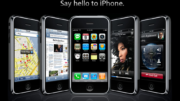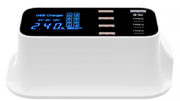Reprinted with permission from the weBoost blog.
If you’ve noticed that your weBoost cell signal booster isn’t delivering the performance it once did, there is probably a simple explanation. A decline in a signal booster’s effectiveness can result from various factors. But thankfully, most of them aren’t difficult to fix.
In this article, we’ll look at some common reasons why your cell signal booster isn’t working like it used to, and help you correct them.
Structural factors in cell signal booster performance
Sometimes, the reason your signal booster isn’t working like it used to is a fixable issue with physical structure. These structural factors that could affect your cell signal include:
Outside Obstructions
As growth fuels additional construction and the landscape changes over time, obstacles that didn’t interfere with your outside signal before can begin to impede its path. New buildings, ongoing construction, or natural obstructions like trees and hills can either block or weaken the external signal.
Maybe you’re surrounded by more homes than you were a few years ago. Maybe the surrounding trees have grown. Either way, any time the outside antenna has new obstructions, signal may be blocked from reaching your booster antenna.
There isn’t much you can do about surrounding buildings and trees, unless they belong to you. But if you suspect that growing obstructions are hindering your signal, changing the location of your antenna or raising it up could fix the problem. Mounting your antenna on a pole, for example, could raise it high enough to clear those obstructions.
Antenna Position
Proper antenna positioning is essential for optimal performance. Outside, check to see if conditions like wind have changed the position of your antenna. It’s possible that over time, its direction has changed and it’s no longer pointing the right way.
You’ll also want to make sure that both the outside and inside antennas are still correctly placed according to the manufacturer’s guidelines. Are they still far enough apart? Do you need to relocate your inside antenna due to structural changes or where you most use your devices?
Correct antenna positioning maximizes your booster’s efficiency and allows it to provide the best signal boost possible. If your cell signal booster isn’t working like it should, antenna positioning is one of the first things to check.
Cables and Connections
Seemingly minor issues with cables and connections can have a major impact on your booster’s performance. Check your cables for damage or wear. Ensure that every connection is finger tight. Faulty cables or connectors or loose connections can lead to signal loss and a decrease in your booster’s effectiveness.
Interference
If your booster operates in the same area as other electronic devices, those other devices may emit frequencies of their own that cause interference. This interference can disrupt booster performance and keep it from working the way it used to.
Consider other devices you’ve brought into your home recently. How close are they to your booster components? You might need to relocate something to make sure devices are far enough apart that they don’t interfere.
Outside signal strength
The strength of your outside signal is the backbone of your cell signal booster’s performance, but it’s not necessarily constant. Network traffic, tower changes, and technical difficulties can all affect how much signal is available.
A cell signal booster is designed to amplify the existing outdoor signal and deliver it inside where you can use it. The outside signal doesn’t have to be strong, but there does need to be something to boost. It’s possible that your network is experiencing increased demand or having technical difficulties that are affecting outside signal strength. If the problem persists, call your carrier to report the problem and see how they plan to fix it.
Outdated software
Sometimes, a signal booster may require a software update to align with new cell network protocols or frequencies. Ensuring that your booster’s software is up to date can be essential for its optimal performance. Contact Solid Signal if you have questions about how to do this.
Network changes
Your wireless carrier may have made changes to their network infrastructure or frequency bands. These changes can directly affect your booster’s compatibility and effectiveness. If you’re experiencing a drop in performance, changes in your area’s cell tower or signal quality may be the culprit.
Contact your carrier to explain the situation and ask about any changes that may have been made. If this is going to be an ongoing issue, you could also check the coverage of other carriers in your area and see if it’s time to switch.
Aging equipment
weBoost cell signal boosters are made to last many years. But if you’ve had your booster for a long time, components may have degraded somewhat, impacting its performance. If you’ve noticed a significant decline and have no other explanation, it could be time to replace parts or get a newer booster. Call us at 866-294-1660. We can help you troubleshoot and determine if replacement is warranted.
Seasonal impact on your cell signal booster
A lot of people don’t realize that seasonal factors and weather can affect cell signal. For example, in spring and summer, the growth of leaves on trees can scatter the cell signal on its way to your outside antenna. If this is a problem for you, you may need to reposition or raise your antenna to clear the trees.
If it snows where you live, then a snowstorm that piles snow on your antenna may hinder its performance. If you find your booster isn’t working correctly, step outside and check for buildup of snow and ice. Clearing off the accumulation may make a big difference.
Conclusion
If you’ve experienced a decline in your weBoost cell signal booster’s performance, understanding the potential causes can help you find a simple solution. If you need help troubleshooting issues like overload or oscillation, our customer support team is here to help. You might also consider a professional installation or inspection. Restoring your booster’s performance can be as simple as addressing these common factors to ensure it continues to deliver the reliable signal boost you need.





